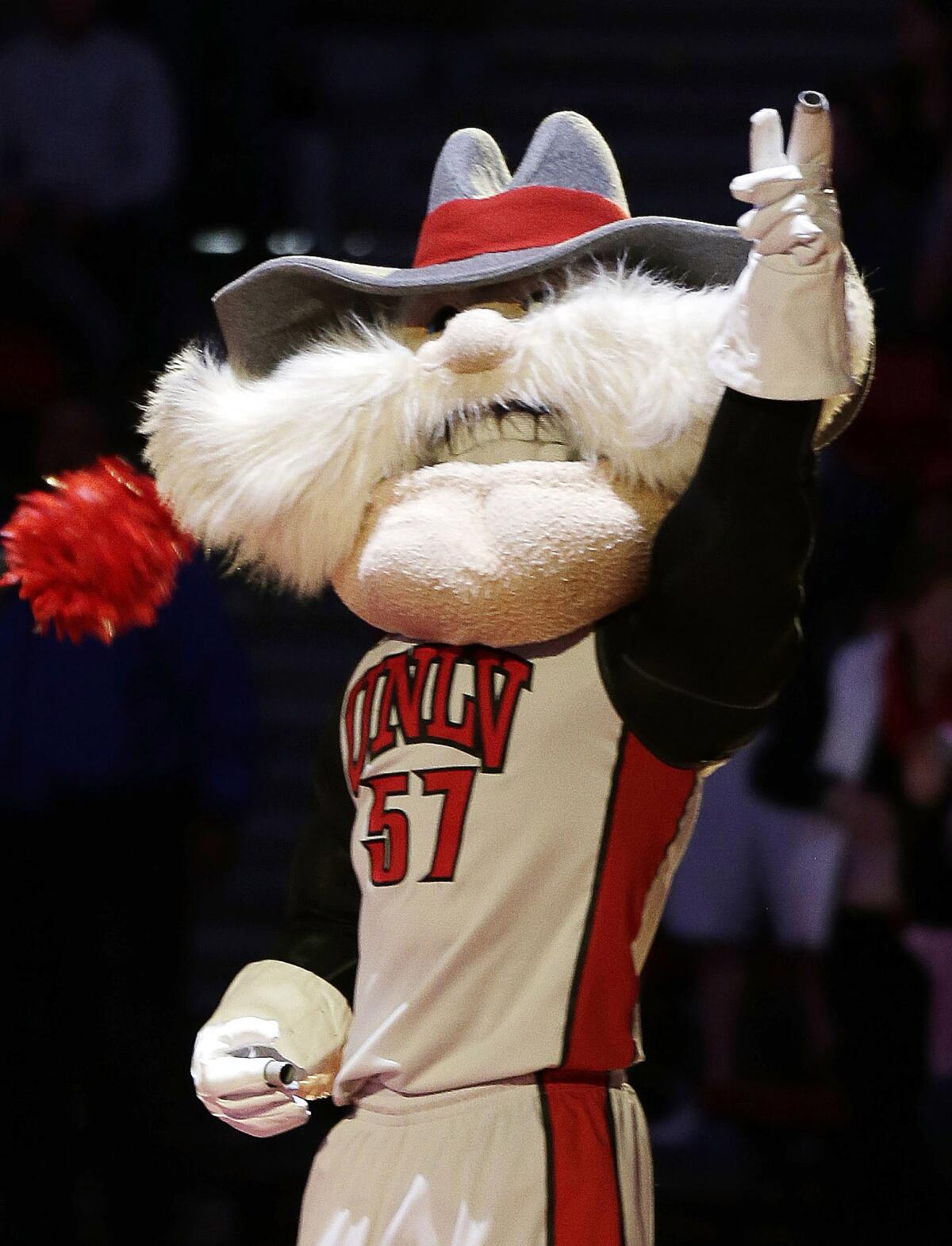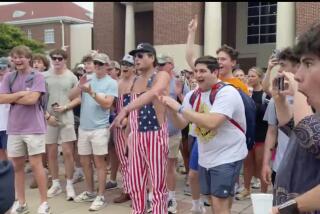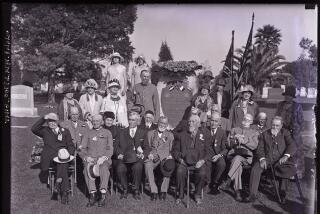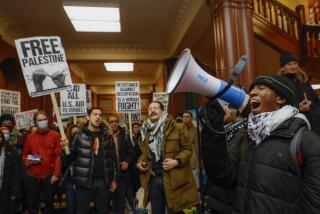At UNLV, a north-south divide over rebel mascot -- but it’s not what you think

The University of Nevada Las Vegas mascot, Hey Reb! (exclamation mark included), warms up the crowd before a basketball game.
He is all bushy mustache and jutting chin below a pair of beady black eyes. His wide, gray hat perches at a tilt and his skin is the color of early peaches.
His name is “Hey Reb!” — exclamation mark included — and years ago he was supposed to be the end of a mascot controversy at the University of Nevada, Las Vegas. These days he is the beginning of a new one.
UNLV, like many public high schools and universities, is examining its mascot. The shooting deaths of nine congregants at a black church in Charleston, S.C., at the hands of a man who posed online with Confederate flags prompted U.S. Sen. Harry Reid of Nevada to question the appropriateness of Hey Reb!
In response, UNLV President Len Jessup requested that Rainier Spencer, vice provost for Academic Affairs at UNLV and the school’s chief diversity officer, analyze the mascot’s history, a five-month project that led Spencer to some surprising conclusions.
“I was expecting to find a racist past that we have to apologize for,” Spencer said. “I thought I would find traces of the Confederacy or something that had been erased over the years. That’s the story in the air over here.”
Instead, what Spencer found was this: “We just don’t know our own history.”
Spencer concluded that Hey Reb! is itself the result of protests against a mascot 30 years ago, a wolf named Beauregard bedecked in a soldier’s field jacket and a military cap.
After a group of black athletes told the university president in the 1970s that they would rather not wear the symbol on their jerseys, the name Beauregard was dropped. A year later, the wolf got the boot too, replaced by the image of a colonial-era militiaman. UNLV then went a few years without any mascot until in 1982, when it settled on Hey Reb!.
He was deliberately given a Western look. Drawings show him with a feather in his hat, and his long coat has fringe dangling from the shoulders, suggesting Buffalo Bill more than Stonewall Jackson.
Even so, the continued use of the “Rebels” for sports teams and the military nature of his appearance — he carries a long gun — led about 200 students this year to protest Hey Reb! as a racist representation of the Old South. Also, sometimes just the face of Hey Reb! is shown, so the Western motif is missing.
“You can’t take off a few belt buckles and have him not look like a Confederate soldier,” UNLV student Tra Andra’ Mitchell, 22, told the Las Vegas Review-Journal.
Whether affiliated with the Confederacy or claiming a link to a local tribe, controversial mascots have either been changed to something less provocative or maintained in defiance of protests. In some places, like the University of Mississippi, the comparison to the Confederacy was obvious: the mascot was named Colonel Reb, a white man in the dress of an Old South plantation owner, leaning on a cane. The mascot was changed to a bear in 2010.
With campuses afire with protests over injustices intended and injustices perceived, the question now at UNLV is: does the intent behind Hey Reb! matter?
The origin of UNLV’s rebel does reflect north-south animus, but not the kind you might think.
UNLV began as a smaller, southern Nevada answer to the moneyed interests in Carson City and Reno in the state’s northern half. Convinced that the south was getting short shrift on funds for academic buildings and dorms, the students named themselves the Rebels.
The name stuck, and by 1957, the idea of a Confederate identity emerged. This, according to Spencer, included a Confederate Cotillion, crowning of a Southern Belle and the creation of the mascot Beauregard, named after a Confederate general, Pierre Gustave Toutant Beauregard. The school newspaper was called the Rebel Yell.
But the brief flirtation with the Confederacy fell away as the state and nation evolved. In 1959, Nevada dropped its ban on interracial marriage and by 1975, the Beauregard nickname was gone. The newspaper was renamed the Yell.
Spencer identified the guiding principle for the mascot search committee in his report.
“Care was taken to ensure that Hey Reb! had no connection to the Confederacy,” he wrote. “The mascot committee ensured that he was a westerner, dressed in Western clothing — not Southern, not cowboy, not plantation.”
In the meantime, UNLV became one of the nation’s most diverse campuses — the university consistently has approximately 50% minority enrollment.
In his research, Spencer also found a deep well of support for the nickname and mascot, including among Las Vegas’ black population. On campus, all but one member of the undergraduate Black Student Organization supported the nickname, but the group said the Hey Reb! mascot looks like a Confederate soldier.
For now, it appears the “Rebels” nickname will stick, as will Hey Reb! Jessup, the university president, made the announcement Monday, adding that the mascot’s costume could do with some updates.
“It has come to represent the very independence and spirit that embodies both UNLV and Southern Nevada,” Jessup said.
Protests about the name are likely to continue, but Spencer said protesters are focusing on the wrong problems.
“It’s a really dangerous place we go to if we get rid of him because of a false claim. We’re then sort of assenting to false claims,” Spencer said. “There are some contexts in which perception outweighs reality. But we are an institution of higher education. We have a responsibility to propagate truth, and not to pretend that truth isn‘t there because of someone’s feelings.”
Twitter: @nigelduara
More to Read
Sign up for Essential California
The most important California stories and recommendations in your inbox every morning.
You may occasionally receive promotional content from the Los Angeles Times.











